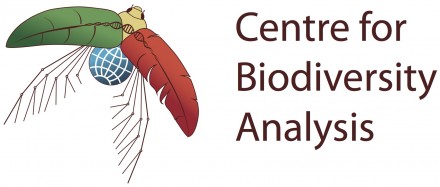Exploring Australia’s diversity for pathogens of weeds
Centre for Biodiversity Analysis-supported student project
Agriculture is a key industry in Australia generating $59bn AUD p.a. However, production is limited by many factors including pathogens and weeds. Weeds reduce the productivity of available land for crops or grazing pastures by competing with crops and pastures for resources and acting as natural reservoirs of pathogens.
The Solomon Lab has reduced the impact of cereal pathogens by discovering small molecules secreted by pathogens known as effectors. These molecules initiate disease on the host through a gene-for-gene interaction. Identifying these interactions has accelerated plant breeding programs generating disease resistant cultivars. This path to molecule discovery could also identify effectors and secondary metabolites eliciting disease on economically significant weed species.
To address weed threats to Australian agriculture, this project aims to isolate and identify bacteria and fungi from several major weed species - wild oat (Avena fatua), Paterson’s curse (Echium plantagineum), wild radish (Raphinanus raphinistrum), blackberry (Rubus fruticosus) and gorse (Ulex europaeus). Identifying these microbes will allow us to assess which weeds act as natural reservoirs for crop and livestock pathogens, while isolating these microbes will allow us to screen for pathogens of the weed host. Isolating these weed pathogens and understanding their basic biology will enable us to develop novel weed biocontrol methods.
All microbes will be identified through PCR amplification and Sanger sequencing of the internally transcribed spacer (ITS) region of the fungal rRNA gene and the 16s small subunit (SSU) of the bacterial rRNA gene. We will then screen this library for microbes able to induce disease formation on the host plant. The disease progression caused by these pathogens, as well as their in vitro and in planta growth characteristics will then be described. To discover if small secreted molecules play a role in causing disease, the axenic pathogens will be grown in different media which will then be sterilised and infiltrated into the host plant tissue. Resulting disease symptoms will indicate the presence of secreted pathogenicity factors. Proteomics and mass-spectrometry will then identify candidate pathogenicity molecules.
The successful applicant will be supported by a $5,000 stipend along with excellent support throughout the project. They will have the opportunity to work across two world-class research institutions - ANU's Research School of Biology (Plant Sciences) and CSIRO's Australian National Herbarium - and with collaborators at the NSW Department of Primary Industries (Senior plant pathologist, Andrew Milgate) and Dalness Farms (Environmental operations manager, Alexandra Tabor), who will provide access to weeds and help to identify diseased plant tissue.
Please get touch with supervisors Oliver Mead (Oliver.Mead@csiro.au) or Peter Solomon (Peter.Solomon@anu.edu.au) if you would like to apply and/or receive more information.







